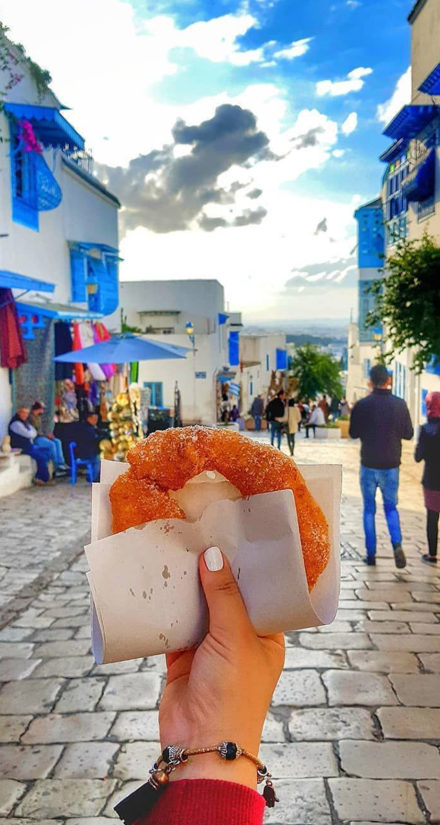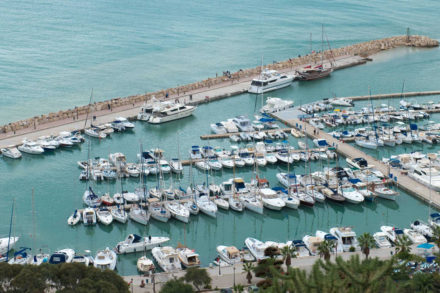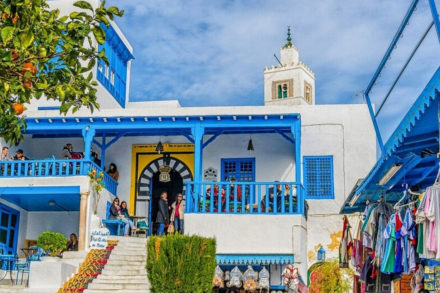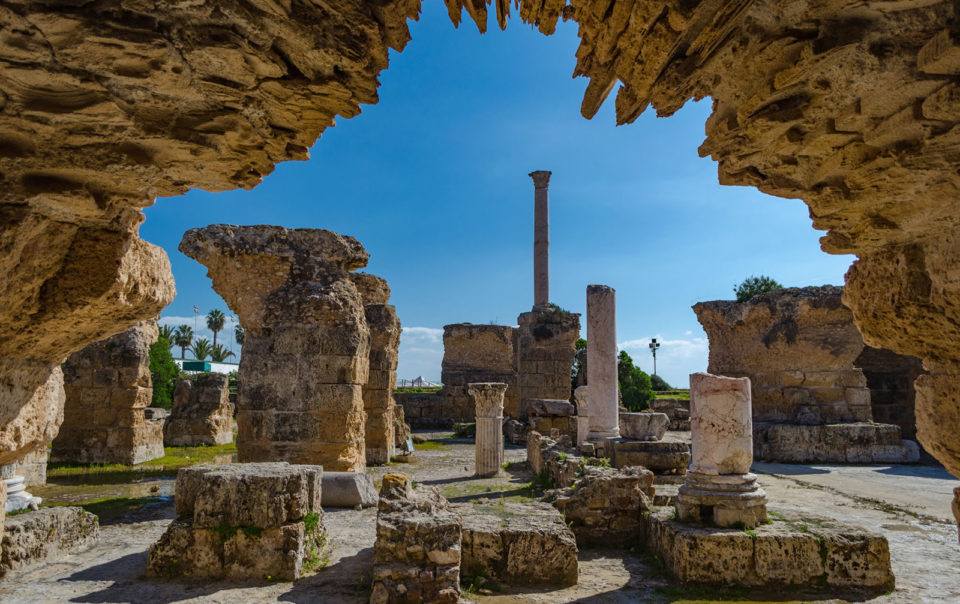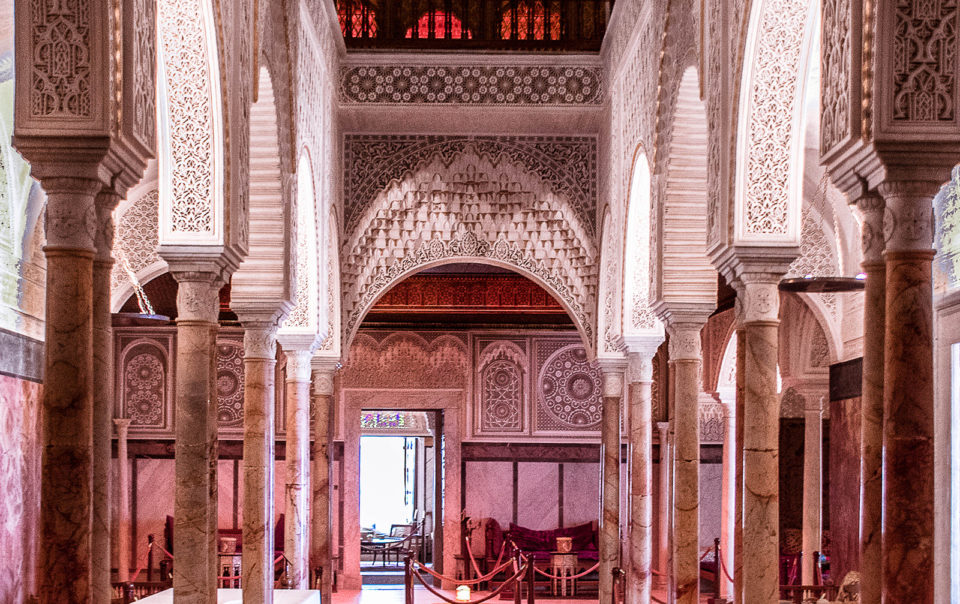Village of Sidi Bou Said
The very first listed site
in the world
As early as the seventeenth century, the charm of this village that bears the name of a Muslim saint who died in 1231 and whose grave is still honored today, seduces the Tunisian bourgeoisie and Husseinite Bey family. It became the seat of a municipality in 1835. In 1915, an order is made to protect the village, imposing the blue and white colors so dear to the Baron d’Erlanger , a painter , musicologist and great Franco-British orientalist , who built a 2000m2 palace in a garden of five hectares, now “Center and Museum of Arab and Mediterranean Music ” . The decree prohibits uncontrolled construction on the promontory , making Sidi Bou Said the very first listed site in the world.

